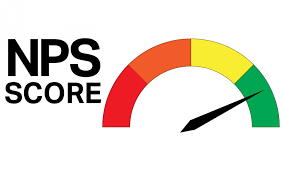Net Promoter Score (NPS)
The popular marketing metrics by marketers
Net Promoter Score (NPS) is generally utilized by organizations to quantify client unwaveringness and check the general fulfillment of their client base. Created by Fred Reichheld in 2003, NPS has acquired huge prevalence because of its effortlessness and viability in evaluating client feelings. Given the responses to a solitary inquiry, it is determined: “On a size of 0-10, how probably would you say you are to suggest our organization/item/administration to a companion or partner?”
According to their ratings, those who responded were divided into three groups: Advertising (scoring 9–10), Passive responses (score 7-8), and Opponents (score 0-6). The NPS is then calculated by subtracting the Adversaries level from the Adopter’s level, resulting in a score between -100 and +100.

An NPS score good number shows high client dedication and support. Such a score proposes that a greater part of clients are profoundly fulfilled and able to prescribe the organization or its contributions to other people. Accomplishing such a wonderful score demonstrates the unique nature of the items or administrations and the viability of the client experience and backing given by the organization.
A high NPS mirrors a few positive parts of a business. It shows that the organization has major areas of strength for a driven concentration and conveys extraordinary worth to its clients. This degree of fulfillment frequently converts into expanded client maintenance, rehash business, and certain verbal exchange proposals that can drive new client obtaining.
Besides, a high NPS score demonstrates that the organization has effective major areas of strength for constructing with its clients, cultivating trust and faithfulness. This can prompt higher client lifetime esteem, as faithful clients generally spend more and are less inclined to change to contenders.
An NPS score good number is likewise characteristic of successful client commitment and backing. It proposes that the organization effectively pays attention to its clients, figures out their necessities, and makes fitting moves to address their interests and inclinations. This degree of responsiveness and mindfulness adds to a positive client experience, building up their fulfillment and probability to advance the organization.
Nonetheless, it is essential to note that NPS is only one measurement, and a high score isn’t guaranteed to ensure business achievement. Organizations need to investigate the fundamental drivers of consumer loyalty and ceaselessly take a stab at progress. Moreover, observing patterns and looking at the score against industry benchmarks can give significant knowledge for future development and improvement.
Overall, a Net Advertiser Score implies remarkable client steadfastness and support. It mirrors consumer loyalty, trust, and eagerness to suggest the organization or its contributions. Accomplishing such a score requires a client-driven approach, successful commitment, and constant endeavors to improve the client experience.




